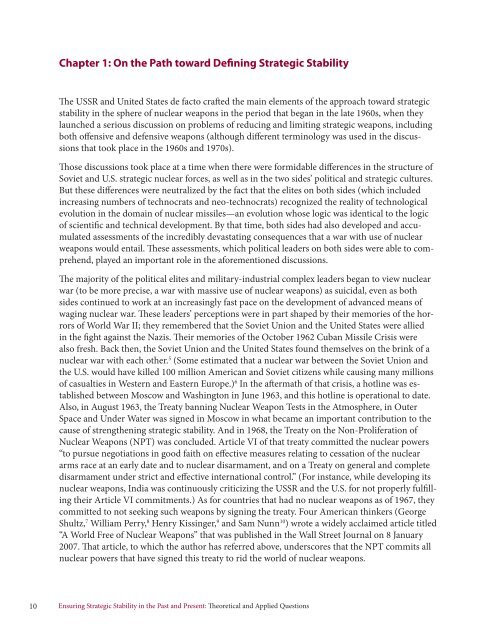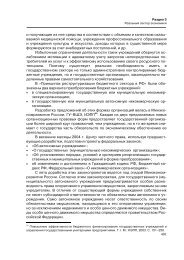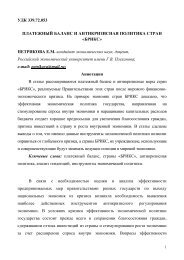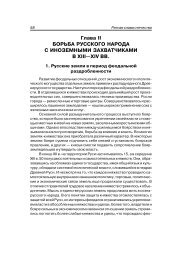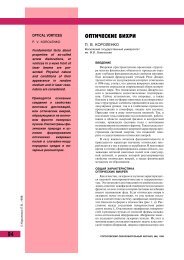Ensuring Strategic Stability in the Past and Present:
Ensuring Strategic Stability in the Past and Present:
Ensuring Strategic Stability in the Past and Present:
You also want an ePaper? Increase the reach of your titles
YUMPU automatically turns print PDFs into web optimized ePapers that Google loves.
Chapter 1: On <strong>the</strong> Path toward Def<strong>in</strong><strong>in</strong>g <strong>Strategic</strong> <strong>Stability</strong>The USSR <strong>and</strong> United States de facto crafted <strong>the</strong> ma<strong>in</strong> elements of <strong>the</strong> approach toward strategicstability <strong>in</strong> <strong>the</strong> sphere of nuclear weapons <strong>in</strong> <strong>the</strong> period that began <strong>in</strong> <strong>the</strong> late 1960s, when <strong>the</strong>ylaunched a serious discussion on problems of reduc<strong>in</strong>g <strong>and</strong> limit<strong>in</strong>g strategic weapons, <strong>in</strong>clud<strong>in</strong>gboth offensive <strong>and</strong> defensive weapons (although different term<strong>in</strong>ology was used <strong>in</strong> <strong>the</strong> discussionsthat took place <strong>in</strong> <strong>the</strong> 1960s <strong>and</strong> 1970s).Those discussions took place at a time when <strong>the</strong>re were formidable differences <strong>in</strong> <strong>the</strong> structure ofSoviet <strong>and</strong> U.S. strategic nuclear forces, as well as <strong>in</strong> <strong>the</strong> two sides’ political <strong>and</strong> strategic cultures.But <strong>the</strong>se differences were neutralized by <strong>the</strong> fact that <strong>the</strong> elites on both sides (which <strong>in</strong>cluded<strong>in</strong>creas<strong>in</strong>g numbers of technocrats <strong>and</strong> neo-technocrats) recognized <strong>the</strong> reality of technologicalevolution <strong>in</strong> <strong>the</strong> doma<strong>in</strong> of nuclear missiles—an evolution whose logic was identical to <strong>the</strong> logicof scientific <strong>and</strong> technical development. By that time, both sides had also developed <strong>and</strong> accumulatedassessments of <strong>the</strong> <strong>in</strong>credibly devastat<strong>in</strong>g consequences that a war with use of nuclearweapons would entail. These assessments, which political leaders on both sides were able to comprehend,played an important role <strong>in</strong> <strong>the</strong> aforementioned discussions.The majority of <strong>the</strong> political elites <strong>and</strong> military-<strong>in</strong>dustrial complex leaders began to view nuclearwar (to be more precise, a war with massive use of nuclear weapons) as suicidal, even as bothsides cont<strong>in</strong>ued to work at an <strong>in</strong>creas<strong>in</strong>gly fast pace on <strong>the</strong> development of advanced means ofwag<strong>in</strong>g nuclear war. These leaders’ perceptions were <strong>in</strong> part shaped by <strong>the</strong>ir memories of <strong>the</strong> horrorsof World War II; <strong>the</strong>y remembered that <strong>the</strong> Soviet Union <strong>and</strong> <strong>the</strong> United States were allied<strong>in</strong> <strong>the</strong> fight aga<strong>in</strong>st <strong>the</strong> Nazis. Their memories of <strong>the</strong> October 1962 Cuban Missile Crisis werealso fresh. Back <strong>the</strong>n, <strong>the</strong> Soviet Union <strong>and</strong> <strong>the</strong> United States found <strong>the</strong>mselves on <strong>the</strong> br<strong>in</strong>k of anuclear war with each o<strong>the</strong>r. 5 (Some estimated that a nuclear war between <strong>the</strong> Soviet Union <strong>and</strong><strong>the</strong> U.S. would have killed 100 million American <strong>and</strong> Soviet citizens while caus<strong>in</strong>g many millionsof casualties <strong>in</strong> Western <strong>and</strong> Eastern Europe.) 6 In <strong>the</strong> aftermath of that crisis, a hotl<strong>in</strong>e was establishedbetween Moscow <strong>and</strong> Wash<strong>in</strong>gton <strong>in</strong> June 1963, <strong>and</strong> this hotl<strong>in</strong>e is operational to date.Also, <strong>in</strong> August 1963, <strong>the</strong> Treaty bann<strong>in</strong>g Nuclear Weapon Tests <strong>in</strong> <strong>the</strong> Atmosphere, <strong>in</strong> OuterSpace <strong>and</strong> Under Water was signed <strong>in</strong> Moscow <strong>in</strong> what became an important contribution to <strong>the</strong>cause of streng<strong>the</strong>n<strong>in</strong>g strategic stability. And <strong>in</strong> 1968, <strong>the</strong> Treaty on <strong>the</strong> Non-Proliferation ofNuclear Weapons (NPT) was concluded. Article VI of that treaty committed <strong>the</strong> nuclear powers“to pursue negotiations <strong>in</strong> good faith on effective measures relat<strong>in</strong>g to cessation of <strong>the</strong> nucleararms race at an early date <strong>and</strong> to nuclear disarmament, <strong>and</strong> on a Treaty on general <strong>and</strong> completedisarmament under strict <strong>and</strong> effective <strong>in</strong>ternational control.” (For <strong>in</strong>stance, while develop<strong>in</strong>g itsnuclear weapons, India was cont<strong>in</strong>uously criticiz<strong>in</strong>g <strong>the</strong> USSR <strong>and</strong> <strong>the</strong> U.S. for not properly fulfill<strong>in</strong>g<strong>the</strong>ir Article VI commitments.) As for countries that had no nuclear weapons as of 1967, <strong>the</strong>ycommitted to not seek<strong>in</strong>g such weapons by sign<strong>in</strong>g <strong>the</strong> treaty. Four American th<strong>in</strong>kers (GeorgeShultz, 7 William Perry, 8 Henry Kiss<strong>in</strong>ger, 9 <strong>and</strong> Sam Nunn 10 ) wrote a widely acclaimed article titled“A World Free of Nuclear Weapons” that was published <strong>in</strong> <strong>the</strong> Wall Street Journal on 8 January2007. That article, to which <strong>the</strong> author has referred above, underscores that <strong>the</strong> NPT commits allnuclear powers that have signed this treaty to rid <strong>the</strong> world of nuclear weapons.10<strong>Ensur<strong>in</strong>g</strong> <strong>Strategic</strong> <strong>Stability</strong> <strong>in</strong> <strong>the</strong> <strong>Past</strong> <strong>and</strong> <strong>Present</strong>: Theoretical <strong>and</strong> Applied Questions


